
This Gothic Revival styled church was built in 1887 and dedicated in May of that year by Dr. J. L. Otts of Greensboro, Alabama. A fellowship hall was …
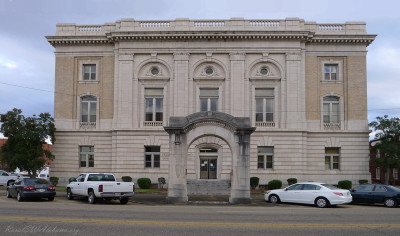
The Federal Building, originally the U.S. Post Office, was completed in 1909 from plans by James Knox Taylor, Supervising Architect of the Treasury 18 …

This Gothic Revival-style church building was constructed in 1894 by a local black architect, Dave Benjamin West. This church, along with its nearby n …

According to the August 5, 1866 minutes of the Uniontown Baptist Church, the Colored portion of the church requested that their White Brothers grant l …
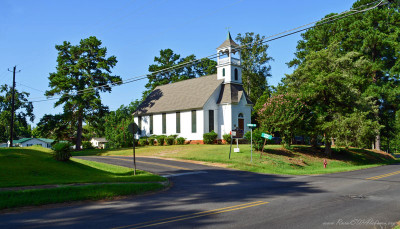
This church congregation was established in 1869 at the Lincoln School by freed slaves and representatives of the American Missionary Association. The …
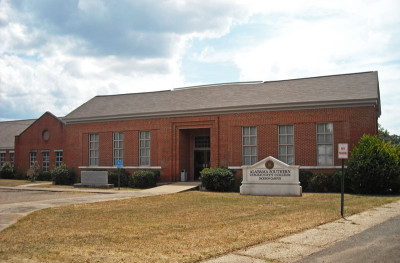
In 1891, nine agricultural schools, one in each congressional district, were authorized by the Alabama Legislature. One of the schools was located at …
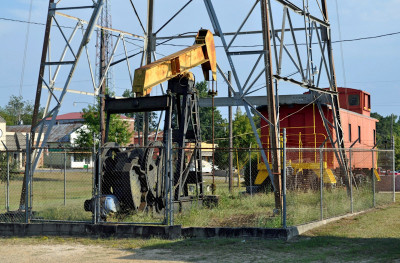
On January 2, 1944, the State of Alabama granted Hunt Oil Company a permit to drill the A. R. Jackson Well No. 1 at Gilbertown, AL. Hunt Oil Company …

This church congregation was organized in 1845. The original church building was erected in 1856. It burned on September 17, 1869 and the present bu …
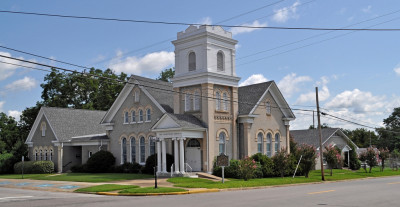
The First Presbyterian Church in Demopolis was organized by the Tuscaloosa Presbytery on November 1, 1839 with nine members. The congregation erected …
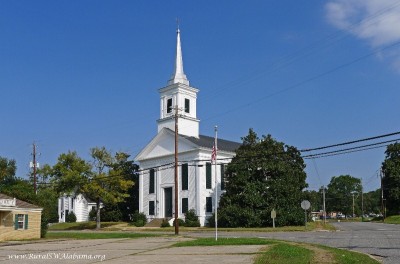
This Presbyterian Church was established as a congregation in 1824, worshipping in a smaller church in old Mesopotamia, one mile to the northwest of E …

Organized in 1838, the Presbyterian congregation built the present church in 1893-1894. This is their third church building and the second on this sit …

The Presbyterian Church was organized in 1848 at the home of Col. J. H. Davidson, The Slopes Plantation, which was located south of Uniontown. The con …
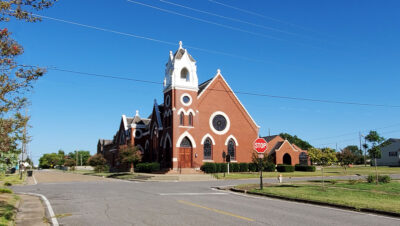
The exact date of the founding of the Demopolis Methodist Church is not known. However, the circuit riders of the Marengo Circuit (1826-1840) were ac …

Records indicate that a Conecuh County Circuit first appeared in the Methodist Conference in 1821. The early church was called “Thick Woods” and was …

The first mention of an organized Methodist Church in St. Stephens was 1856 and this church was constructed in 1857. Land for the church was given by …

This two story house was built circa 1850 using hand-hewn 12-inch boards put together with pegs. The house was moved back about 30 feet from the highw …

This marker is located about 2 miles west of Perdue Hill in Monroe County on the south side of U.S. Highway 84 near the intersection of Lena Landegger …

Foscue Creek Park is located at Demopolis, AL on the forested lake shore of Demopolis Lake, the largest lake on the Black Warrior-Tombigbee Waterway. …
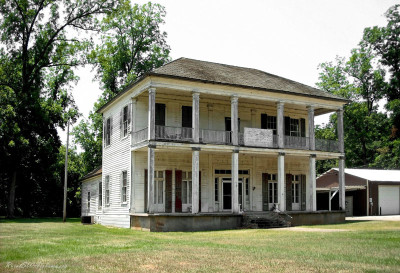
This house was built about 1851 by Dr. John T. Foster who was practicing medicine at Mt. Sterling. It is located in Butler on Young Street approximate …

In the fall of 1902, two men and three ladies filed a declaration to form the Fruitdale Union Chapel Association. Property for the church was purchas …

The original church building was constructed in 1857 on the present site of land. The current building was completed in 1882 and was an active church …

Furman, AL is a small community located is eastern Wilcox County. On May 13, 1999, the “Furman Historic District” was placed on the National Register …

It’s believed that this dwelling was built in the late 1820s. The house’s modified I-frame architecture, the absence of a center hallway, and federal …
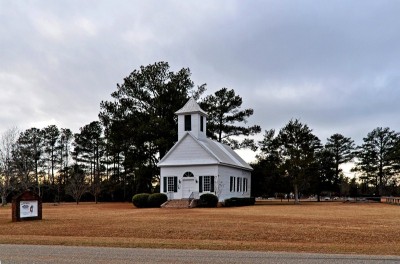
This church was founded in 1819 by Rev. Joshua Wilson. In 1854, a two-story building was built on this site. The lower floor was a church and the upp …

During the 1860 – 1880 period, Edward N. Kring (1836-1910) emerged as the leading carpenter and builder of Gainesville. He built several businesses an …

This is Gainesville’s oldest church. The congregation was organized in April of 1837 through the joint efforts of a small group of Southern-born Presb …
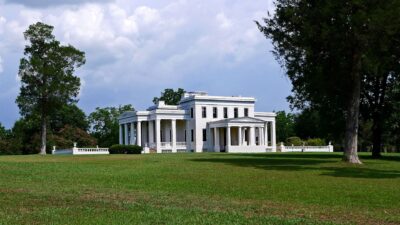
Constructed over an 18 year period (1843-1861), Gaineswood evolved from a two-room “dogtrot” cabin into a Greek Revival style mansion. General Nathan …
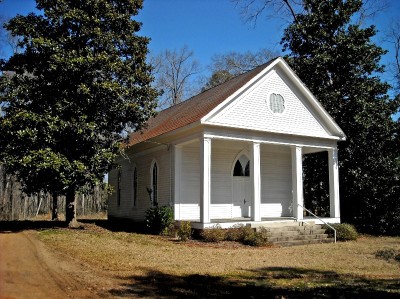
The Presbyterians originally built in the area a hewn-log house for a church. It was replaced with a frame building in 1830. The present Greek Reviva …
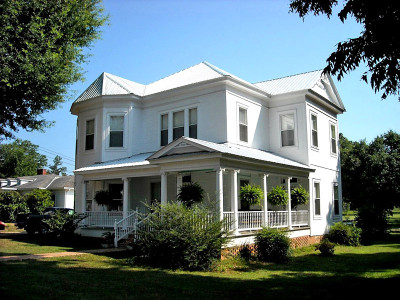
This is one of several “Sears, Roebuck & Co.” homes that were shipped by railroad to Wilcox County in the early 1900’s. They came as modular secti …

There may be no home in the Black Belt with more history attached to it than this one. It was built in 1828 – 1829 by John Gayle, a South Carolina nat …

At the site of this monument, Gen. Nathan Bedford Forrest and his troops were paroled by Gen. Canby thus being the last troops east of the Mississippi …

William J. Hardee (1815 – 1873) graduated from the U.S. Military Academy at West Point in 1838. He served in Florida during the Second Seminole War an …

Shown is Gene & Ellen’s Drive-In which is located in the middle of downtown Grove Hill. You walk up to the window, tell the folks what you want an …

This house was built circa 1854 by Selma businessman George O. Baker. The Neo-Classic architecture features a front porch with pillars and a small cup …
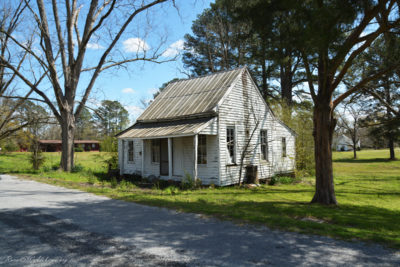
This small cottage was built circa 1880 as a servant’s house. It is located on the south side of Third Avenue approximately 100 yards east of the inte …
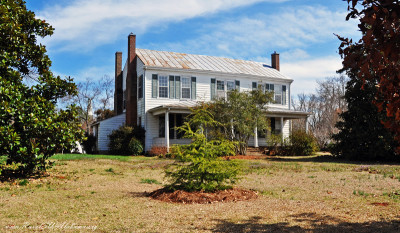
This house was built by Edwin D. King as a wedding present for his daughter Sarah when she married John Goree in May 1831. At that time it had four ro …

This house, built in the 1830’s, was the home of Alabama’s First Civil War Governor, Andrew Barry Moore. It is located on the north side of Green Str …
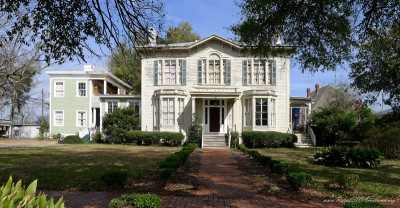
This Italianate-style house was built circa 1857. In 1865, Wilson’s Raiders spared the house out of respect for Selma’s Mayor M. J. Williams. For many …

Soon after the town of Eutaw was surveyed in 1838 and laid out as the newly established seat of Greene County, John V. Crossland began construction of …
